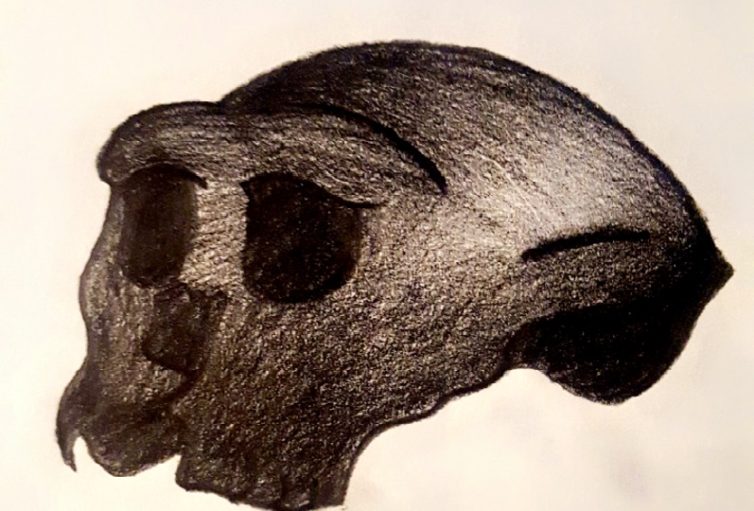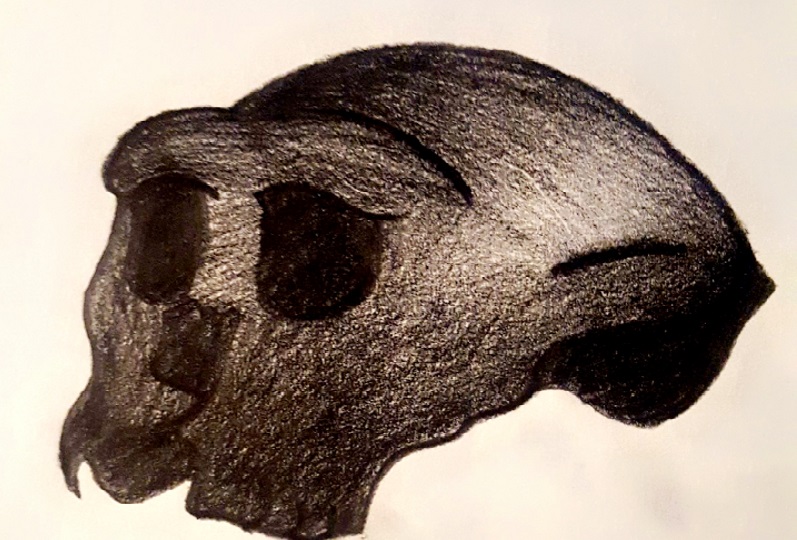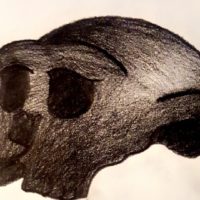Nine human species walked the Earth 300,000 years ago. Now there is just one. While you may have heard about Neanderthals, you may not know much about their enigmatic cousins, the Denisovans that inhabited Asia.
The Denisovans are an extinct species or subspecies of archaic human that ranged across Asia during the Lower and Middle Paleolithic. With few remains available, what we know comes from from DNA evidence.
Join the NHSM fossil club to learn about the different human species and how they interacted with each other, what impact the Denisovans had on archaic human introgression, the transfer back and forth of genetic information from species to species through hybridization, and how the archaeological view differs from the paleogenetics view.
The image titled, “The Beginning”, drawn by our presenter Robert Moshe Thompson, an amateur paleoanthropology enthusiast, depicts the skull of Sahelanthropus tchadensis. Like the Denisovans, S. tchadensis is a controversial hominin known only from one locale. Denisovan fossils appear nondescript, and could easily be mistaken for any other hominin- including S. tchadensis. Therefore, it is necessary to explore this problem in order to understand the Denisovans.



